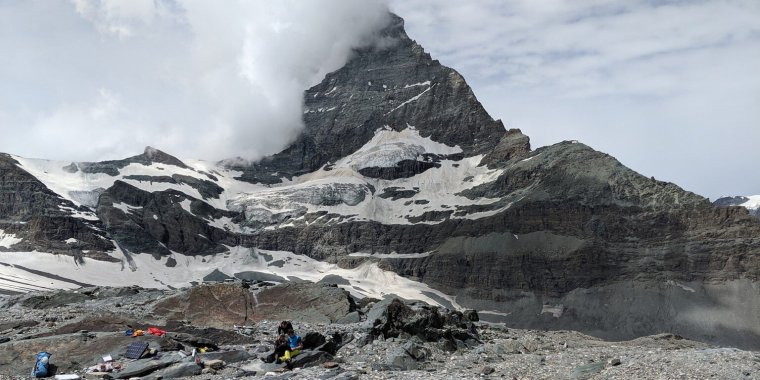| News / Science News |
How the Matterhorn constantly sways
The Matterhorn appears as an immovable, massive mountain that towers over the landscape near Zermatt, Switzerland. A study shows that this impression is wrong.

The Matterhorn is constantly in motion, swaying gently back-and-forth. Photo: The University of Utah
An international research team has proved that the Matterhorn is instead constantly in motion, swaying gently back-and-forth about once every two seconds.
This subtle vibration with normally imperceptible amplitudes is stimulated by seismic energy in the Earth from oceans, earthquakes and human activity.
Every object vibrates at certain frequencies when excited, like a tuning fork or the strings of a guitar. These frequencies depend primarily on the geometry of the object and its material properties.
The phenomenon is also observed in bridges, high-rise buildings and now mountains. Listen to the Matterhorn as it sways.
Jeff Moore, a geologist at the University of Utah who initiated the study on the Matterhorn, says that areas of the mountain experiencing amplified ground motion are likely to be more prone to landslides, rockfall and rock damage when shaken by a strong earthquake.
For the study, the scientists installed several seismometers on the Matterhorn, including one at 14,665 feet above sea level, just below the summit, and another in the Solvay Bivouac, an emergency shelter on the northeast ridge.
Another measuring station at the foot of the mountain served as a reference.
The seismometers recorded all movements of the mountain at high resolution, from which the team could derive the frequency and direction of resonance.
The measurements show that the Matterhorn oscillates roughly in a north-south direction at a frequency of 0.42 Hertz (cycles per second), and in an east-west direction at a second, similar frequency.
By speeding up these ambient vibration measurements 80 times, the team was able to make the vibration landscape of the Matterhorn audible to the human ear, translating the resonant frequencies into audible tones. (National Science Foundation)
YOU MAY ALSO LIKE





